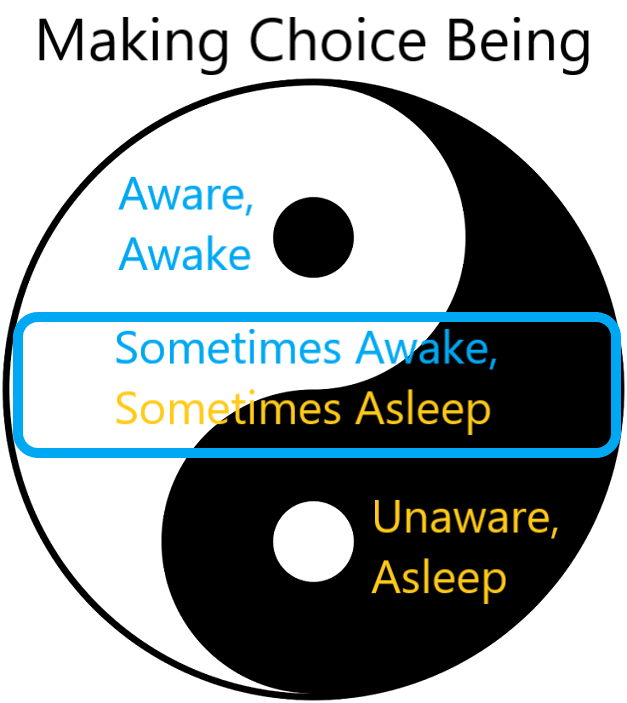Choice, Part (II) Pdf
INTRODUCTION
We began our exploration of choice last month by giving a definition of choice, exploring how choice operates, describing the importance of choice, and enumerating the different types of choice. The overall purpose of that discussion was to show how important choice is in our lives and to urge you to be more aware of the process of choosing and more aware of the choices you make. Awareness is the key, the key to creating the life we want through choice.
This month we continue to explore other aspects of choice with the goal of empowering, through understanding, our ability to make wise and powerful choices to get us where we want to go. This exploration may in some ways seem simple and obvious. Because it is so “common sense,” we can overlook choice and dismiss it. However, if you put into practice what is described here you may find it surprisingly difficult and therefore challenging.
WHY WE MAKE THE CHOICES WE DO
All behavior (thinking, feeling, and acting) is designed to fulfill our needs, which are: survival, safe/security, belonging/loving, self-esteem, to create/produce/know, self-actualization, and to experience beauty/mystery/transcendence. Every human being has these needs. However, how we fulfill our needs is a matter of individual choice.
Point Of Empowerment: Though our needs are universal (common among all human beings), how we fulfill our needs is a matter of individual choice.
Each choice we make comes from who we are as a person, comes from our Self. Our Self is complex, with many moving parts—the developmental self, ego, personality, conscience, and identity/image. (see The Operating Manual for the Self for a description of all the moving parts.) We can learn much about those parts by reflecting on the choices we make. Studying the choices you make can show you who you are, how you operate, what your beliefs and values are, how the comfort zone operates in you, and what your resistances are. See the Letters on beliefs, values, the comfort zone, and resistances. https://iifsd.org/library/newsletters/
PUTTING CHOICE INTO ACTION
In order to accomplish our goal of increased awareness regarding choice, we can use intention (what is my purpose) and attention (where I  put my awareness). As our primary intention is to fulfill our needs, each moment of our life contains the desire for something we want to fulfill a need. Our next intention is to fulfill that desire by getting what we want. After deciding what we want, we choose our strategy, how we will get it. We then pay attention to our strategy and follow through with action. (This process operates automatically most of the time, which is generally ok.)
put my awareness). As our primary intention is to fulfill our needs, each moment of our life contains the desire for something we want to fulfill a need. Our next intention is to fulfill that desire by getting what we want. After deciding what we want, we choose our strategy, how we will get it. We then pay attention to our strategy and follow through with action. (This process operates automatically most of the time, which is generally ok.)
As an example let’s consider my need to belong. I can satisfy this need by visiting my parents over the holidays. I decide that I will visit them and make choices about how I will accomplish this. I then pay attention to the specific steps (actions) I need to take to accomplish my plan, my strategy for fulfilling my need. This example may sound simple, but we often have complex intentions and may or may not do what we need to do to accomplish an intention. For example: “I have ambivalent feelings about my siblings. While I love them I can also hate them. Therefore the intention of expressing my love for them can be filled with sabotage and aggression at times. I lose sight of, and do not pay attention to, my deepest needs for love and belonging and my intentions to fulfill these needs.”
The chart below helps us see where we face a choice. Each box describes a place where we need to make a choice.
 We can use this chart with simple or complex desires, intentions, attentions, and actions.
We can use this chart with simple or complex desires, intentions, attentions, and actions.
 The first step in this process is to know what I want, my desire. Our desires usually operate at a level below our conscious awareness, at the subconscious level. When this happens we can get a less than satisfactory result.
The first step in this process is to know what I want, my desire. Our desires usually operate at a level below our conscious awareness, at the subconscious level. When this happens we can get a less than satisfactory result.
Point of Empowerment: The more we consciously choose our desires and choices with awareness, the more in control we are of our life.
Practice: For two minutes say, “Now I desire and now I choose” for everything you want. “Now I desire and choose to breathe. Now I desire and choose to take a shower. Now I desire and choose to kiss my son. Now I desire and choose to get angry at my daughter. Now I desire and choose to do something to make me happy. Now I desire and choose to feel grateful for all the wonderful things in my life.” Or, “Now I desire and choose to feel like a helpless victim stuck in an unhappy life.”
DEALING WITH CONSEQUENCES, EVALUATING THE OUTCOMES OF OUR CHOICES
There are always consequences to our actions or inactions, and to the choices that precede them.
There are positive (pleasurable) consequences and negative (painful) consequences. We need to accept—to acknowledge as a fact, without denial, the consequences that we create by our choices and actions.
We need to evaluate the outcome of our choices. This is done by simply asking the question: “Did my choices and actions get me what I wanted?” We examine the actions we took and look at the consequences. If we got what we wanted, we need to acknowledge that. We could call this a success. For the sake of clarity, we could call not getting what we want a failure. Whether we succeed or fail we ask, “What were the consequences of my choices and actions?” Recognizing what we did to succeed brings us knowledge about succeeding. And understanding our failures also brings us knowledge about succeeding.
Practice: If you did not get what you wanted, consider alternatives and make new choices. If you got what you wanted congratulate yourself and celebrate. The practice of self-congratulation and celebration brings us happiness and joy.
In order to be able to accept and to evaluate the consequences of our choices and actions we need to be willing to take responsibility for them. In order to take responsibility we look at what happened and own the results. The key here is recognition—seeing with clarity, and ownership—acknowledging that the choices and actions that created the consequences I experienced belong to me.
MAKING BETTER CHOICES
Since our choices arise from who we are as a person, to make better choices we have to become a “better” person, i.e. a person who is more effective at creating his or her life. This means that we grow, mature, develop, and evolve. To quote The Operating Manual for the Self (page 324): to grow is to become larger; to develop is to increase our ability, our capability; to mature is to grow and develop in a way that enhances who we are by giving us new perspectives on life. To evolve is to self-actualize (express different aspects of our self) in a way that increases the richness and depth of our being. How do we do this? One way is to observe yourself as you go through the entire process of making a choice with the intention that you will learn more about who you are. Ask yourself these questions:
- Do I know what my needs are? Can I describe them?
- Am I aware of my intention to fulfill them?
- Can I design strategies to full them?
- Am I aware of making choices to put my strategies into action?
- Do I face the consequences of my choices and actions?
- Do I accept responsibility for the consequences of my actions?
- Do I seek to become happier by making better choices?
RESISTANCE TO CONSCIOUS CHOICE
The resistance (reluctance) to making conscious choices is the refusal to be aware that we are making choices and refusing to examine the consequences of those choices. This comes from being unwilling to take responsibility for our actions. The most common cause for refusing to take responsibility is self-criticism, ranging from mild to moderate to severe to brutal self-criticism. In order to avoid the pain of self-criticism when we “do something wrong,” we avoid taking responsibility for our actions. Additionally, we fear failure and fear making mistakes.
The antidote to self-criticism is self-acceptance. Self-acceptance says, “I am a fallible human being with strengths and weakness. I will get it right sometimes and will make mistakes at other times. It is all ok.” Self-acceptance gives you the courage to be willing to make mistakes. The willingness to make mistakes also comes from the commitment to examine what happens as you make choices and put those choices into action.
Point of Empowerment: The commitment to learn from your mistakes is a commitment to your own wellbeing and happiness.
CONCLUSION
Here is an idea about our exploration of choice, which may have sounded simplistic at times.
Point of Empowerment: Powerful ideas are straightforward and understandable, easy to begin implementing, and challenge us to unlock their full potential and our full potential.
Let yourself be challenged by what you have read and reap the rewards of rising to meet the challenge.

